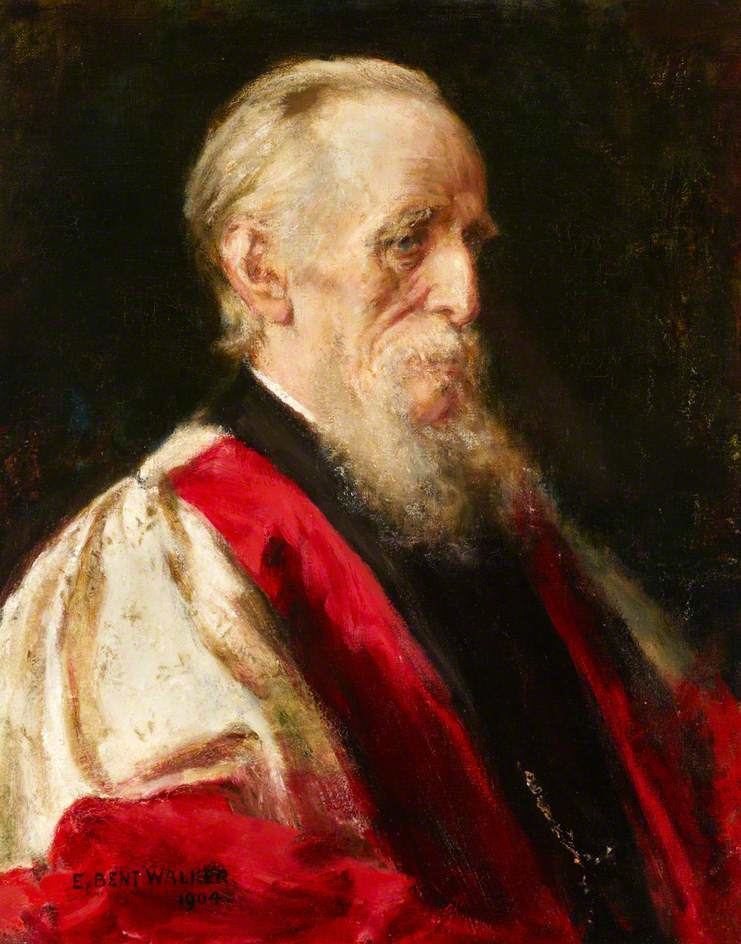Name Ebenezer Prout Role Writer | Children Louis Beethoven Prout | |
 | ||
Died December 1909, London, United Kingdom Books Harmony: its theory and practi, Counterpoint Strict and Free, Applied forms, Analysis of JS Bach's forty‑eight, Double Counterpoint and Canon | ||
Ebenezer prout symphony no 4 in d major 1886
Ebenezer Prout (; 1 March 1835 – 5 December 1909) was an English musical theorist, writer, teacher and composer, whose instruction, afterwards embodied in a series of standard works still used today, underpinned the work of many British classical musicians of succeeding generations.
Contents
- Ebenezer prout symphony no 4 in d major 1886
- Ebenezer Prout Organ Concerto No 1 in Em
- Career
- Compositions
- Theoretical works
- References

Ebenezer Prout - Organ Concerto No. 1 in Em
Career

Prout was born in Oundle. He studied piano under Charles Salaman, but was otherwise self-taught. He attended the University of London intended for a career as a scholar, but chose to follow one in music through his love of it. From 1861 to 1873 he was organist of the Union Chapel, Islington. From 1861 to 1885 he was professor of the piano at the Crystal Palace School of Art. He was awarded first prizes for a string quartet (1862) and a pianoforte quartet (1865) by the Society of British Musicians. In 1871–74 he became Editor of the Monthly Musical Record, and in 1874–79 was music critic for the Academy. In 1863 he was one of the first twenty-one members of the Royal College of Organists.
In 1879 he was appointed professor of harmony and composition at Royal Academy of Music in London, and became music critic of the Athenaeum. In 1884 he became professor at the Guildhall School of Music. In 1894 he was appointed Professor of Music in the University of Dublin, being awarded an Honorary Mus.Doc. in the following year. During this period he not only trained his students but delivered memorable public lecture series, notably one on the Bach cantatas illustrated by singers whom he had trained.
It was also to this period that his principal theoretical works belong, which became classics and were translated into many languages. Prout produced editions of many of the classics, not least for the Handel oratorios. He was directly connected with the rediscovery of the original wind parts for Messiah, from which new full and vocal scores were introduced by him to the Royal Society of Musicians in 1902. He was furthermore a composer of concert, church and chamber music.
As an editor, Prout reflected the practices of his own time in that he felt justified in replacing Handel's phrasing and expression marks with his own preferences. In this respect Prout differed from his contemporary Friedrich Chrysander, who was the first to produce an edition attempting to convey the composer's own intentions.
Among Prout's many students were Arthur Goring Thomas, Eugen d'Albert, John Waterhouse, Henry Wood and Edward German. See: List of music students by teacher: N to Q#Ebenezer Prout.
His son Louis Beethoven Prout (b. Hackney, 1864) was also a writer on musical theory, having trained under his father at the Royal Academy, and becoming professor at the Guildhall School. Louis Beethoven Prout's principal works are an Analysis of Bach's 48 Fugues (Weekes); Harmonic Analysis (Augener); Sidelights on Harmony (Augener); and Time, Rhythm and Expression (Augener). In addition Louis Beethoven Prout was a leading entomologist, being a foremost authority on the Geometridae, or geometer moths.
Ebenezer Prout died in Canterbury.
